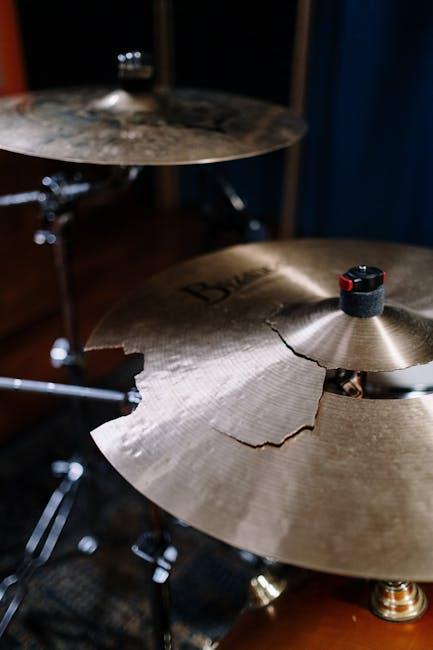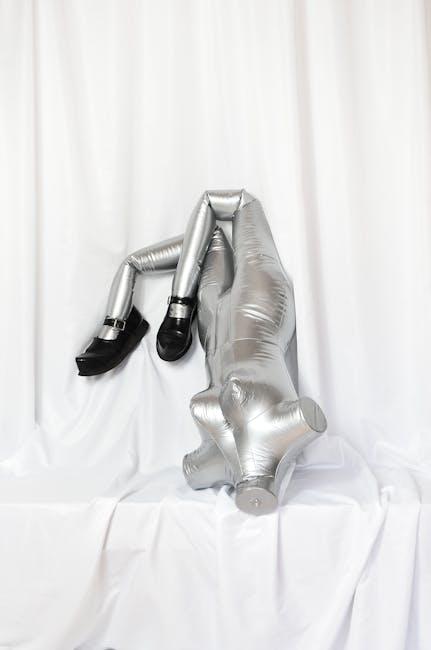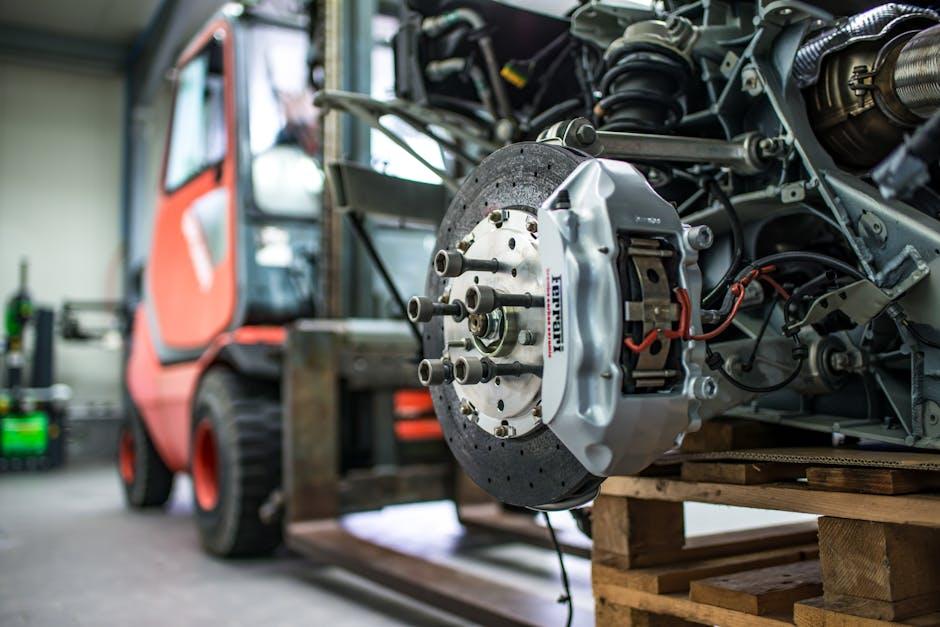Beneath the smooth hum of your daily drive lies a complex network of components working tirelessly to keep you safe and comfortable. Among these, the suspension system plays a silent yet vital role, cushioning your journey from every bump and dip in the road. But what happens when this crucial mechanism starts to falter? Recognizing the early signs of suspension problems can be the difference between a minor repair and a major breakdown. In this article, we’ll explore the telltale symptoms that your vehicle’s suspension might be struggling, helping you stay informed and prepared before those subtle warning signals turn into costly issues.
Table of Contents
- Common Warning Signals of Suspension Wear and Tear
- How Uneven Tire Wear Reveals Hidden Suspension Issues
- Interpreting Unusual Noises for Accurate Suspension Diagnosis
- The Impact of Poor Suspension on Vehicle Handling and Safety
- Routine Checks to Identify Early Suspension Failures
- Expert Tips for Maintaining a Smooth and Responsive Suspension System
- Q&A
- Insights and Conclusions

Common Warning Signals of Suspension Wear and Tear
Spotting the early signs of suspension distress can save you a lot of hassle and expense down the road. Drivers often notice an unsettling bouncing or swaying sensation when navigating bumps or turns, indicating worn-out shock absorbers. Another red flag is uneven tire wear, which suggests the suspension components aren’t distributing weight properly, leading to compromised road grip and handling. A telltale creaking or knocking noise when driving over rough surfaces can also be a giveaway that bushings or joints are deteriorating.
- Steering vibrations: Feeling the steering wheel tremble at certain speeds signals suspension or alignment issues.
- Vehicle sagging: One corner of your car sits lower than others, often a sign of a damaged spring.
- Longer stopping distances: Worn suspension can affect braking efficiency, increasing the distance required to stop.
| Symptom | Possible Cause | Risk if Ignored |
|---|---|---|
| Excessive Bouncing | Worn Shock Absorbers | Reduced Control |
| Uneven Tire Wear | Faulty Suspension Alignment | Premature Tire Replacement |
| Knocking Noise | Loose or Damaged Bushings | Component Failure |

How Uneven Tire Wear Reveals Hidden Suspension Issues
When your tires start displaying uneven wear patterns, it’s more than just a sign to rotate or replace them—it often points to underlying suspension malfunctions. For example, if the edges of your tires wear out faster than the center, your alignment might be off due to worn ball joints or bushings. Similarly, cupping or scalloped tread wear can indicate issues with shock absorbers or struts failing to maintain proper contact with the road. Such inconsistencies not only decrease tire life but compromise vehicle stability and safety.
Here are common types of uneven tire wear and their likely suspension culprits:
- Inner or Outer Edge Wear: Typically caused by misaligned camber angles, often from worn control arm components.
- Center Tire Wear: May signal overinflation but can also result from suspension parts compressing unevenly.
- Cupping or Scalloping: Classic symptoms of failing shocks or struts unable to absorb road shocks properly.
| Wear Pattern | Potential Suspension Issue | Impact |
|---|---|---|
| Inner Edge | Worn Control Arm Bushings | Poor Handling Stability |
| Outer Edge | Incorrect Camber Angle | Uneven Tire Grip |
| Cupping | Faulty Shock Absorbers | Harsh Ride & Noise |

Interpreting Unusual Noises for Accurate Suspension Diagnosis
When your vehicle begins to emit unusual noises, it’s crucial to listen carefully and decode the signals to pinpoint suspension issues accurately. Common sounds such as clunking, creaking, or knocking often indicate worn-out bushings, loose components, or damaged shock absorbers. For instance, a rhythmic knocking noise over bumps typically signals failing ball joints or control arms, while a persistent creak when turning may mean dried-out or cracked suspension bushings. Recognizing these subtle auditory cues can save you from costly repairs down the line by addressing problems promptly.
Below is a quick reference to help correlate specific noises with likely suspension causes:
| Noise Type | Likely Cause | Recommended Action |
|---|---|---|
| Clunking on bumps | Worn control arm bushings | Inspect and replace bushings |
| Creaking during turns | Dry or cracked bushings | Lubricate or replace bushings |
| Knocking over rough roads | Damaged shock absorbers or ball joints | Shock or joint replacement |
| Squeaking when braking | Loose suspension mounts | Tighten mounts and check alignment |

The Impact of Poor Suspension on Vehicle Handling and Safety
When a vehicle’s suspension system is compromised, it directly affects how the car responds to the road surface and driver inputs. A poor suspension setup can lead to reduced tire contact, causing instability during cornering, braking, and acceleration. This instability increases the risk of losing control, especially on wet or uneven roads. The vehicle may also exhibit excessive body roll, nose-diving when braking hard, or rear-end squatting under acceleration, all of which diminish the driver’s confidence and increase accident potential.
Beyond the obvious discomfort, these handling issues translate to harsher impacts on the vehicle’s structure and components, accelerating wear and repair costs. Below is a quick reference table highlighting some common handling symptoms and their safety implications:
| Handling Symptom | Safety Concern | Possible Cause |
|---|---|---|
| Pulling to one side | Compromised steering control | Uneven suspension wear |
| Excessive bouncing | Reduced tire-road contact | Faulty shock absorbers |
| Uneven tire wear | Compromised grip and braking | Misaligned suspension components |

Routine Checks to Identify Early Suspension Failures
Regular assessment of your vehicle’s suspension system can prevent minor issues from blossoming into costly repairs. Start with a thorough visual inspection of components such as shock absorbers, struts, springs, and bushings. Look for signs of wear and tear like fluid leaks, cracks, or rust. Don’t forget to check the tire wear patterns—uneven wear can be an early indicator that the suspension isn’t distributing weight correctly. Additionally, give the wheels a gentle shake to detect play or looseness, which may point to failing ball joints or tie rods. Performing these routine checks ensures you catch problems when they’re still manageable.
- Check for unusual noises: Listen for clunks or rattles when driving over bumps.
- Feel for abnormal vehicle behavior: Note any excessive bouncing or pulling to one side.
- Inspect alignment and steering response: Responsive steering without wandering is a good sign.
Consider keeping a simple log of your inspections to track changes over time. The table below offers a quick reference for common early suspension failure symptoms and their possible causes.
| Symptom | Possible Cause |
|---|---|
| Uneven tire wear | Worn suspension bushings |
| Excessive bouncing | Faulty shock absorbers |
| Steering drift | Misaligned suspension components |
| Clunking noises | Loose ball joints or mounts |

Expert Tips for Maintaining a Smooth and Responsive Suspension System
Keeping your vehicle’s suspension system in prime condition not only extends the life of your car but significantly enhances driving comfort and safety. A few straightforward habits go a long way in ensuring your suspension remains smooth and responsive. Start by regularly inspecting your shock absorbers and struts for visible signs of damage like leaks or dents. Maintaining proper tire pressure and ensuring even tire wear distributes force evenly across the suspension components, preventing premature wear. Additionally, avoid overloading your vehicle beyond its capacity, as excessive weight puts unnecessary strain on the suspension, leading to faster deterioration and a rougher ride.
Consistent maintenance routines are indispensable, but so is paying attention to how your car feels on the road. If you notice excessive bouncing, swaying during turns, or a tendency to nose-dive when braking, these are red flags that should prompt immediate inspection. Consider incorporating these expert tips for long-term care:
- Wheel Alignment: Regularly check and adjust alignment to prevent uneven wear
- Suspension Lubrication: Keep joints and bushings properly lubricated for smooth operation
- Road Condition Awareness: Navigate carefully on rough or uneven surfaces to minimize impact damage
| Common Suspension Issue | Recommended Action | Inspection Interval |
|---|---|---|
| Leaking Shock Absorbers | Replace immediately | Every 50,000 miles or sooner if damaged |
| Uneven Tire Wear | Realign wheels and check suspension parts | Every 12,000 miles or during tire replacement |
| Noisy Suspension | Inspect bushings and lubrication | During routine servicing |
Q&A
Q: What are the common signs that indicate suspension problems in a vehicle?
A: Some telltale signs include unusual noises like clunking or squeaking when driving over bumps, a noticeably rough or bouncy ride, uneven tire wear, and the vehicle pulling to one side. Additionally, if the car feels unstable during turns or the steering wheel vibrates, these can point toward suspension issues.
Q: How can I tell if my shock absorbers or struts are failing?
A: Failing shocks or struts often manifest as excessive bouncing after hitting a bump, longer stopping distances, or a nose-dive effect when braking. If you press down on one corner of your car and it bounces more than once or twice before settling, this is a classic sign of worn shocks or struts.
Q: Can suspension problems affect my safety on the road?
A: Absolutely. A compromised suspension reduces your vehicle’s ability to maintain proper tire contact with the road, which can lead to poor handling, decreased braking efficiency, and increased risk of losing control—especially during sudden maneuvers or in adverse conditions.
Q: Are suspension problems easy to diagnose at home?
A: While some symptoms are noticeable, like strange noises or uneven tire wear, a professional inspection is often necessary. Mechanics can check components like ball joints, bushings, and control arms for wear or damage that’s not immediately visible.
Q: What causes suspension problems to develop?
A: Suspension components endure constant stress from road irregularities, heavy loads, and time. Potholes, rough terrain, accidents, and simple wear and tear gradually degrade parts like shocks, struts, springs, and bushings.
Q: Can I continue driving if I notice suspension issues?
A: While minor issues might not immediately disable your vehicle, driving with a damaged suspension risks further damage and compromises safety. It’s best to get any suspension concerns checked promptly to avoid costly repairs and hazardous situations.
Q: How can I prevent suspension problems?
A: Regular maintenance is key—routine inspections, timely replacement of worn parts, and careful driving over rough roads all help extend suspension life. Keeping tires properly inflated and aligned also minimizes wear on suspension components.
This Q&A shares insights into suspension problems in a clear, informative manner—arming readers with knowledge to recognize and address potential issues before they escalate.
Insights and Conclusions
In the grand symphony of your vehicle’s performance, the suspension plays a subtle but vital role—absorbing shocks, maintaining balance, and ensuring a smooth ride. Recognizing the signs of suspension problems early can transform a potential breakdown into a simple repair, keeping you safe and your journey comfortable. By staying attuned to the whispers of uneven tire wear, strange noises, or unusual handling, you empower yourself to act before minor issues become major headaches. After all, a well-tuned suspension isn’t just about comfort—it’s the invisible guardian of every mile you travel.

